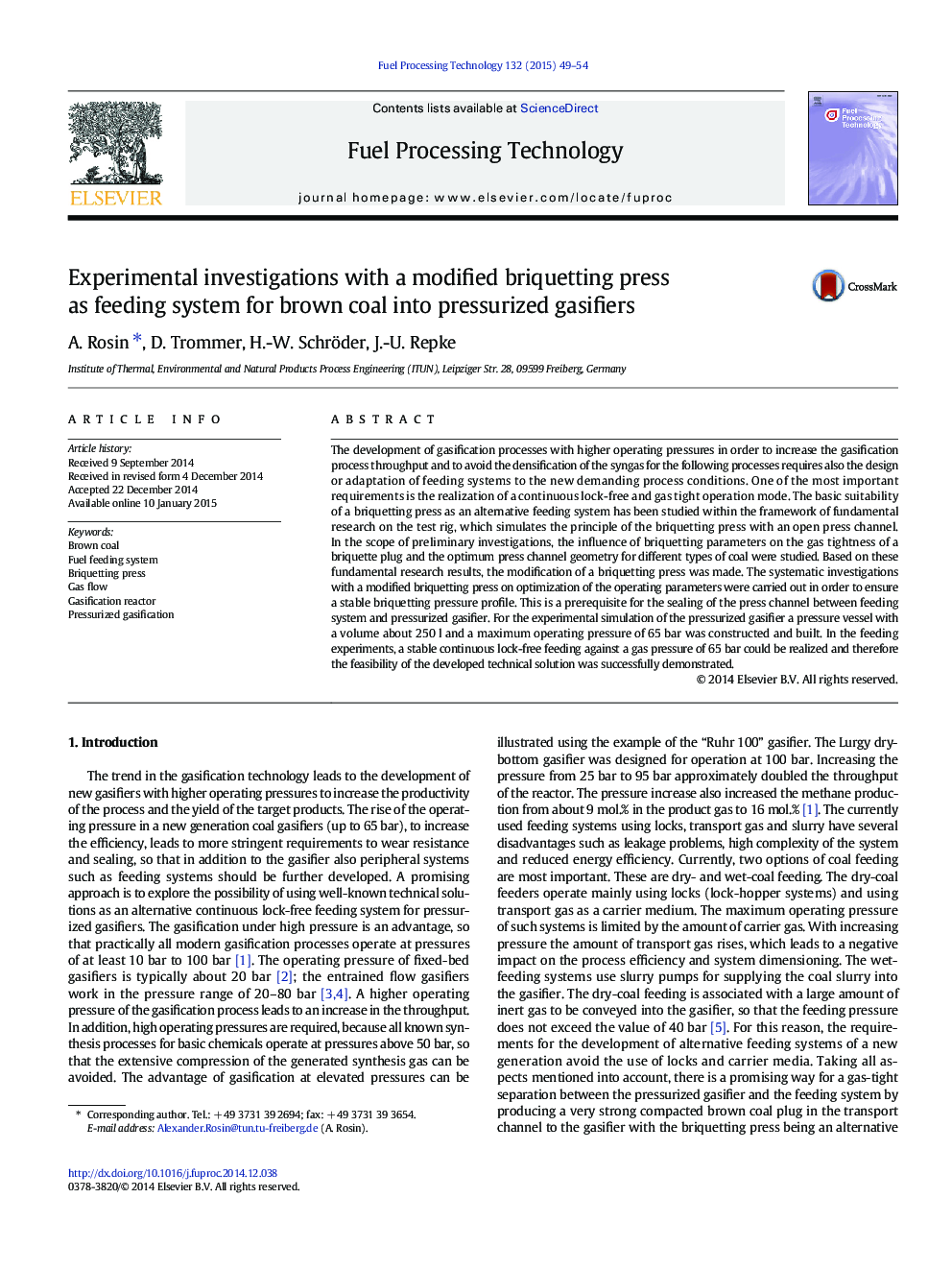| کد مقاله | کد نشریه | سال انتشار | مقاله انگلیسی | نسخه تمام متن |
|---|---|---|---|---|
| 209591 | 461676 | 2015 | 6 صفحه PDF | دانلود رایگان |
• Test of briquetting press as feeding system for pressurized gasifiers
• The hypothesis of the briquetting press use as feeding system could be confirmed.
• Continuous lock-free coal feeding into a pressure vessel (65 bar) was achieved.
• Gas tightness depends on grain size, water content and briquetting pressure.
• Different coal types require special press channel geometry.
The development of gasification processes with higher operating pressures in order to increase the gasification process throughput and to avoid the densification of the syngas for the following processes requires also the design or adaptation of feeding systems to the new demanding process conditions. One of the most important requirements is the realization of a continuous lock-free and gas tight operation mode. The basic suitability of a briquetting press as an alternative feeding system has been studied within the framework of fundamental research on the test rig, which simulates the principle of the briquetting press with an open press channel. In the scope of preliminary investigations, the influence of briquetting parameters on the gas tightness of a briquette plug and the optimum press channel geometry for different types of coal were studied. Based on these fundamental research results, the modification of a briquetting press was made. The systematic investigations with a modified briquetting press on optimization of the operating parameters were carried out in order to ensure a stable briquetting pressure profile. This is a prerequisite for the sealing of the press channel between feeding system and pressurized gasifier. For the experimental simulation of the pressurized gasifier a pressure vessel with a volume about 250 l and a maximum operating pressure of 65 bar was constructed and built. In the feeding experiments, a stable continuous lock-free feeding against a gas pressure of 65 bar could be realized and therefore the feasibility of the developed technical solution was successfully demonstrated.
Journal: Fuel Processing Technology - Volume 132, April 2015, Pages 49–54
